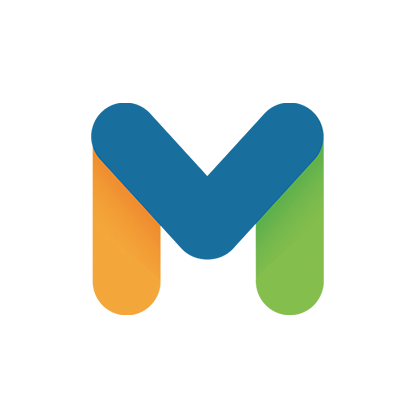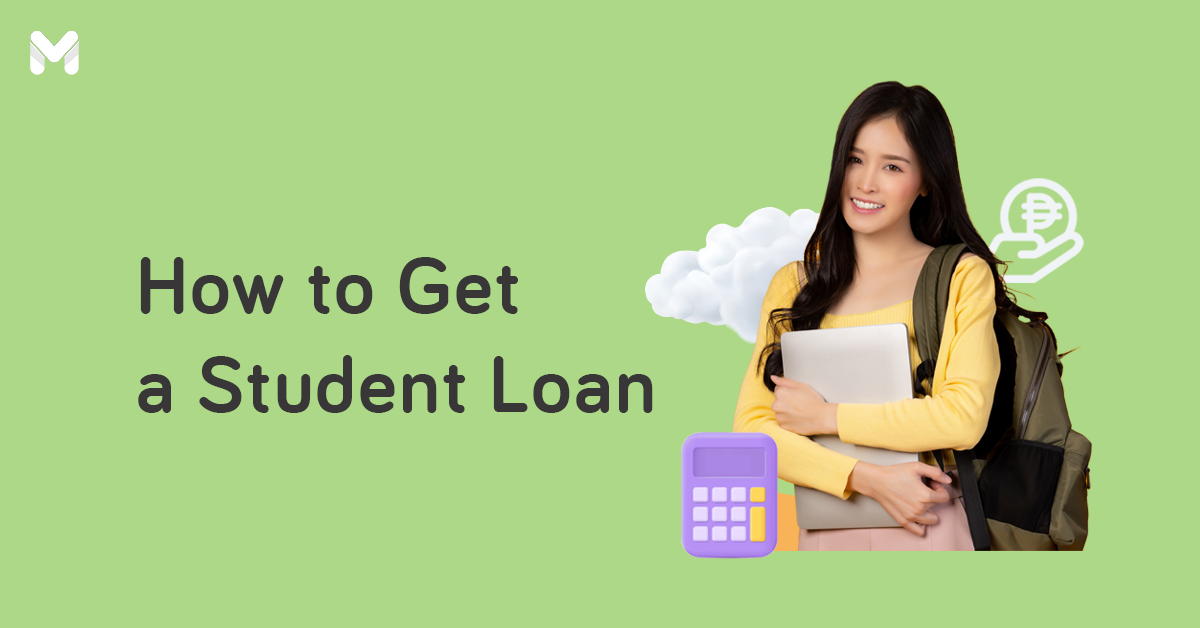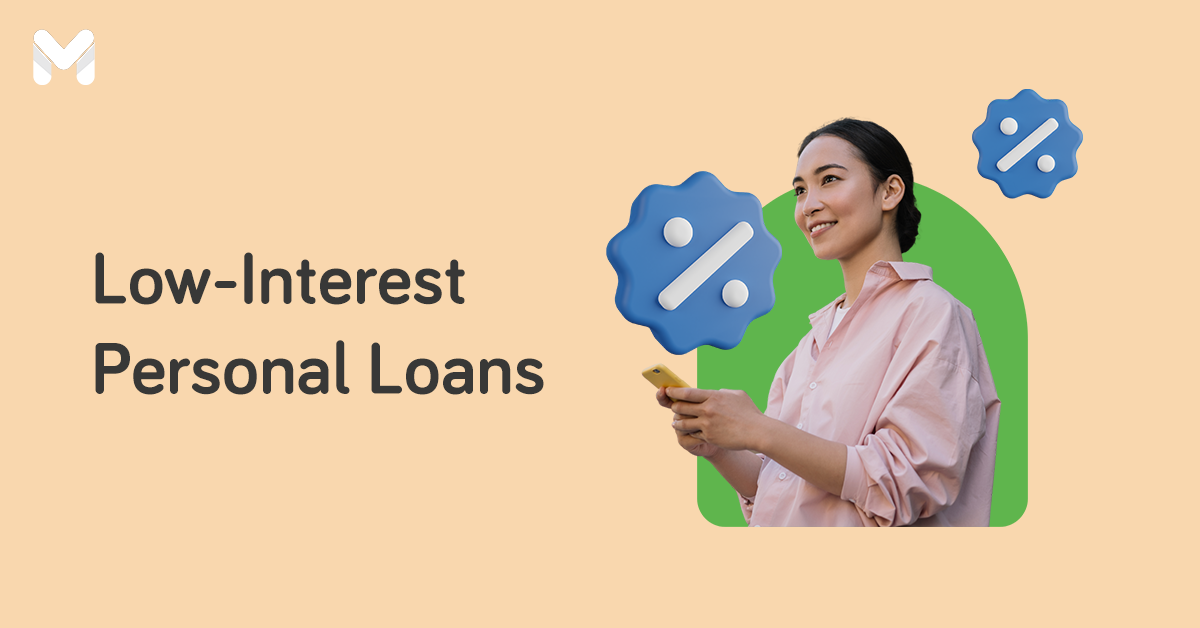Access to education is a fundamental human right. Educational institutions prepare young people to become proactive members of society, equipped with all the knowledge and skills they need to thrive in the real world.
For many Filipino families, education is the ticket to a better life. That’s why parents make sacrifices to be able to send their children to school.
Acknowledging the value of education as well as the crisis in cognitive capital in the Philippines, the Social Security System (SSS) launched an Educational Assistance Loan Program (EALP) to make formal learning opportunities more accessible to Filipino students.
If you need funding for your child’s education, check out the SSS educational loan—it may just give you the help you need!
SSS Educational Loan Overview

What is the SSS educational loan? The SSS student loan, formally known as the SSS Educational Assistance Loan Program (EALP), was first offered in 2012 to help Filipinos in dire need of financial assistance for educational purposes.[1]
A joint initiative between SSS and the national government, the SSS EALP grants member-borrowers and their beneficiaries sustained multi-year support in covering tuition costs and other school fees, all for a reasonable interest rate.
The EALP is like a personal loan in this regard, except it’s strictly for educational purposes. Moreover, because SSS advocates the idea of “Study Now, Pay Later,” it doesn’t require for its educational loan to be repaid until after the student has graduated.
This means member-borrowers and their beneficiaries don’t have to worry about paying off the loan right away. They have more time to figure out their finances and get themselves to a more comfortable place before settling their obligations.
SSS Educational Loan Features
Not yet sure if an SSS educational loan is your best option? Check out the loan’s features below to gauge if it’s for you.[2]
💸 Loan Amount
The total SSS educational loan amount that you can borrow depends on whether you’re getting a degree course or a vocational/technical course.
Degree Course
So how much is an SSS educational loan for a degree course?
You can get a maximum of ₱20,000 per academic term (i.e., semester, trimester, quarter) or net tuition, miscellaneous fees, and assessment balance on a cash basis, whichever is lower.
If your beneficiary is a college freshman under a four-year degree program, you are entitled to a maximum allocation of ₱160,000 spread across a maximum availment of eight semesters, 12 trimesters, or 16 quarters.
Students enrolled in a five-year degree program are entitled to a maximum of ₱200,000 allocation, spread across 10 semesters, 15 trimesters, or 20 quarters.
Vocational or Technical Course
For two-year vocational and technical courses, the SSS educational loan program maximum amount is ₱10,000 per academic term (i.e., semester or trimester) or net tuition, miscellaneous fees, and assessment balance on a cash basis, whichever is lower.
The maximum allocation for a semester program is ₱40,000 spread across four semesters. For a trimester program, the maximum is ₱60,000 spread across six trimesters.
📈 Interest Rate and Other Charges
When the SSS Education Loan Program was first launched, it had a fund allocation of ₱7 billion—half of which was from SSS, and the other half from the national government.
The national government half of the loan has zero interest, while the other half has an SSS educational loan interest of 6% per annum based on the diminishing principal balance until the loan is fully paid. There’s also a 2% maintenance charge for the consolidated principal loan balance, and a 1% monthly penalty charge for any unpaid amortization.
⏳ Repayment Terms
The payment term for degree courses is up to five years, while it’s three years for vocational or technical courses. Since the EALP is essentially an SSS Study Now, Pay Later kind of program, loan repayment starts on the month following the consolidation of the loan.
For semestral programs, the consolidation takes place 18 months after the release of the last check. For trimestral programs, it’s 15 months. For quarter programs, it’s 14 months and 15 days from the last released check. As mentioned, this means students don’t have to worry about paying off the loan until they’re done with their studies.
The actual payment term is determined based on the following, whichever is shorter:
- Preferred payment term of the member-borrower based on their initial EALP application
- Scheduled payment term of the member-borrower based on the principal loan, as shown in the table further down below
- Adjusted payment term of member-borrowers who are 65 years old and above
Learn more about how to pay your SSS educational loan by checking out the three payment term options below.
Preferred Payment Term
Upon your loan application, you may nominate an SSS educational loan payment term that works best for you, as long as it’s shorter than your scheduled payment term based on your principal loan amount.
If, for example, your principal loan is ₱70,000 (which you’re supposed to settle within four years), you can elect to pay it off in two years’ time if you can. This will be better for you financially in the long run as your loan gets subject to a diminishing principal balance.
Scheduled Payment Term
See scheduled payment terms based on principal loan amounts:
- ₱20,000 or below - One year
- ₱20,001 to ₱40,000 - Two years
- ₱40,0001 to ₱60,000 - Three years
- ₱60,001 to ₱80,000 - Four years
- More than ₱80,000 - Five years
Adjusted Payment Term
For member-borrowers who exceed the age requirement—i.e., 65 years old and above at the end of the installment term—their maximum repayment term shall be one year, regardless of their principal loan amount.
SSS Educational Loan Eligibility
-Aug-14-2023-11-24-07-7257-AM.png?width=674&height=449&name=Pics%20for%20blog%20(1)-Aug-14-2023-11-24-07-7257-AM.png)
Who is qualified for an SSS educational loan? Is every Filipino eligible to join the program? Can students apply for an SSS educational loan by themselves?
Find out below.
👉 For First-Time Borrowers
To qualify for the SSS educational loan as a first-time-borrower, you must meet the following eligibility criteria:
- Must be under 60 years old
- Must be an actively paying SSS member with at least 36 posted contributions, six of which must be within the last year before the month of filing the EALP application
- With a monthly basic income of not more than ₱25,000
- Up-to-date in payment of all other member loan amortizations
👉 For Existing EALP Member-Borrowers
To reapply for an educational loan from SSS as an existing EALP member-borrower, you must be able to meet the following:
- With six posted monthly contributions within the last 12 months prior to the month of filing the subsequent EALP application
- Up-to-date in payment of all other member loan amortizations
If you qualify based on the above criteria, you can benefit from the EALP. Apart from yourself, these are the other beneficiaries you can enroll:
- Your legal spouse
- Your children (legitimate, legitimated, illegitimate, legally adopted)
- Your siblings (could be related in full or half)
Just take note that only one beneficiary is allowed per member-borrower. Replacement of beneficiary is also not permitted.
SSS Educational Loan Requirements
The SSS educational loan requirements in 2023 vary depending on whether you’re borrowing for the first time or reapplying for subsequent academic terms.
📋 For First-Time Borrowers
For first-time borrowers, SSS educational loan requirements are more extensive. They include the following:
- Valid identification cards or documents
- Accomplished EALP application form
- Assessment or billing statement issued by the school of the beneficiary
- Proof of monthly salary or income of the member-borrower
- Proof of relationship to beneficiary, if applicable (i.e., birth certificate, marriage contract, and other documents that prove the relationship between the member-borrower and beneficiary)
As you can see above, one of the SSS requirements for students is the school’s assessment of fees or billing statement. This is because SSS doesn’t grant educational loans based on the member-borrower’s salary credit. The loanable amount is based on, among many factors, the actual assessment provided by the school.
This means that you could be earning ₱15,000 monthly, but if the school’s assessment is ₱18,000, then SSS can potentially lend you ₱18,000 instead of just ₱15,000.
📋 For Existing EALP Member-Borrowers
The list of requirements for an SSS educational loan on subsequent applications is shorter:
- Valid identification cards or documents
- Accomplished EALP application form
- Assessment or billing statement issued by the school of the beneficiary
SSS Educational Loan Eligible Courses and Schools
-Aug-14-2023-11-26-22-5291-AM.png?width=600&height=400&name=Pics%20for%20blog%20(2)-Aug-14-2023-11-26-22-5291-AM.png)
You may be wondering if all Filipino students, either as member-borrowers themselves or as beneficiaries, are qualified to join the EALP if they meet the general eligibility criteria described above. The answer is a bit more nuanced than a straight yes or no.
So who can avail of an SSS educational loan? And what educational institutions are covered?
Only Filipino students enrolled in undergraduate courses offered by colleges or universities recognized by the Commission on Higher Education (CHED), Technical Education And Skills Development Authority (TESDA), Civil Aviation Authority of the Philippines (CAAP), and other educational institutions recognized by the Philippine government can apply for the SSS EALP.
This means that students from pre-school to senior high school are not eligible. Moreover, this also cancels out the SSS educational loan for master's degree studies, graduate studies, doctorate degrees, and juris doctor degrees.
SSS Educational Loan Application Process
The SSS educational loan process is easy to follow. The process of applying for an SSS educational loan shares some similarities with that of getting a student loan from other providers—you also need to submit an application form and other basic requirements.
Here’s a step-by-step guide on how to apply for an SSS educational loan:
- Download the application form for the SSS educational loan online.[3]
- Fill out the form. If you need help figuring out how to fill out the SSS educational loan form, you may ask for assistance from any SSS authorized personnel.
- Submit the accomplished SSS educational loan application form and other supporting documents to the nearest SSS servicing branch. If the beneficiary is already of legal age (i.e., 18 years old and above), they must also sign the form to bind them as shared co-borrowers. This will make both the member-borrower and the beneficiary jointly and severally liable to pay all outstanding EALP obligations.
- Wait for SSS to issue you a disclosure statement and acknowledgment stub after the evaluation of your application form.
- If your application is approved, you’ll be notified through text or email as to when your check is ready for pick-up at the branch where you submitted your application.
- Go to the Member Service Section (MSS) of the SSS branch to claim your EALP check.
SSS Educational Loan vs. Student Loans from Lending Institutions
-Aug-14-2023-11-28-37-4752-AM.png?width=600&height=400&name=Pics%20for%20blog%20(3)-Aug-14-2023-11-28-37-4752-AM.png)
How does the SSS educational assistance loan program compare with other student loans or personal loans from other lending institutions? Check out the differences below.
🆚 Purpose of Loan: SSS EALP vs. Other Loan Providers
The SSS educational loan can only be used for specific school expenses—i.e., tuition fees, miscellaneous fees, and assessment balance. This loan isn’t designed to be used for school allowance or even school supplies—which can either be a pro or a con, depending on how you look at it. Limiting how this loan can be used means that those with the least capability to pay for school fees are given priority for the loan.
On the other hand, if you need cash to help with general school-related expenses that are not covered by EALP, you can check out other loan providers that better suit your needs. The Metrobank personal loan, for example, offers loan options that you can use any way you want—e.g., for transport fare, books, gadgets, etc.
It all boils down to knowing where and how you need to use your educational loan.
🆚 Loanable Amount: SSS EALP vs. Other Loan Providers
With the SSS educational loan, you can get up to ₱20,000 per academic term for a degree course. Other online lending apps offer loanable amounts that are less than that with a higher interest rate. Meanwhile, there are lending institutions like banks that offer larger amounts.
Also, it’s worth noting that while most loans offer one-time cashouts, the SSS EALP can support your academic-related financial needs until graduation. This makes it ideal for SSS member-borrowers who just really need the money for their beneficiary’s tuition fees.
🆚 Repayment Scheme: SSS EALP vs. Other Loan Providers
Typically, the case with most loans is that you’ll have to pay them off a month or so after disbursement.
What makes the SSS educational loan ideal for member-borrowers is that it stays true to its promise of “Study Now, Pay Later.” Students are not obliged to pay off their loan until a month after the consolidation of the loan, which can take between 14 to 18 months from the release of the last check. This gives member-borrowers and their beneficiaries ample time to save up for repayment without compromising their finances.
SSS Educational Loan FAQs
Below are some of the frequently asked questions about the SSS student loan.
1. Can I still apply for the SSS EALP when I have other outstanding government loans?
Yes, you may still apply for the SSS educational loan program even with an outstanding SSS salary loan, calamity loan, and housing loan, etc. Just make sure that you still meet the SSS educational loan qualifications outlined above.
2. Can I apply for an SSS educational loan online?
If you’re wondering how to apply for an SSS educational loan online, SSS recently confirmed that this is still not possible. While you can download the SSS educational loan form online, you would have to fill it out offline and submit it over the counter at the nearest SSS servicing branch.
3. Is the SSS educational loan in the Philippines only available to incoming first-year college students?
No. Wherever you are in your college journey, you are free to apply for this loan, as long as the undergraduate courses you’re taking are offered by institutions duly recognized by the Philippine government. See which institutions are included above.
If you’re wondering about how to avail of an SSS educational loan if you’re halfway through your undergraduate studies, it’s the same as how you would apply if you were an incoming college freshman. Your loan amount and repayment terms will just be adjusted based on how many academic terms you have left.
4. Can I reapply for an SSS educational loan for multiple academic terms?
Yes. As long as you qualify for the SSS educational loan program in 2023, you are free to reapply. In fact, you’re encouraged to do so because, that way, SSS would know that your beneficiary is still in school and successfully continuing their education.
Requirements are easier to meet for subsequent loan applications. Since you’ve already proven your eligibility before, the assessment process is more straightforward. SSS just needs to confirm that you’re still an actively paying member who is responsibly paying off loan amortizations. See the full SSS educational loan eligibility criteria above.
Just take note that this loan is applicable for only one beneficiary per member-borrower. Applying for another loan for another beneficiary is not allowed.
5. If my salary has grown after my initial EALP application and now exceeds the income requirement, can I still apply for subsequent loans?
Yes. One of the good things about the SSS educational loan in 2023 is that you only have to meet the income requirement the first time around. For your subsequent applications, your salary will no longer be considered.
6. As a scholar with zero school balance to settle, can I still apply for the SSS EALP to get funds for other school-related expenses?
No. This loan program is designed to help students cover the costs of their tuition, not their school supplies or school allowance. If you’re a full scholar with zero tuition, miscellaneous fees, or assessment balance, you are no longer qualified for an SSS education loan.
7. Can I have my check replaced if there’s a minor error in some of the information?
Yes. You can have your check replaced if, for example, the name of the school or educational institution needs to be corrected. You will just have to pay a replacement fee of ₱300.
Final Thoughts
The SSS educational loan is designed to help SSS member-borrowers and their beneficiaries cover tuition costs. If you need financial assistance to send your kids to school and empower them to finish their studies, take this as an opportunity to give them better access to education and allow them to set themselves up for a brighter future.
Looking for other loan providers who can help your child's education? Compare your options below and apply easily through Moneymax:
|
Provider
|
Loan Amount
|
Monthly Add-on Rate
|
Loan Term
|
Minimum Annual Income
|
Approval Time
|
|---|---|---|---|---|---|
|
UnionBank Personal Loan
|
Up to ₱2 million
|
26.9% per annum
|
12 to 60 months
|
₱250,000
|
As fast as 5 minutes
|
|
UNO Digital Bank Personal Loan
.png?width=149&height=52&name=Unobank-Logo-Colored_Horizontal-Medium%20(for%20MMX).png) |
₱10,000 to ₱500,000
|
1.79% per month (corresponds to annual contractual rates or annual percentage rates ranging from 35.78% to 37.54%)
|
Six to 36 months
|
₱240,000
|
Five to seven banking days
|
|
Metrobank Personal Loan
|
₱20,000 to ₱2 million
|
1.25% to 1.75%
|
36 months
|
₱350,000
|
Seven banking days
|
|
BPI Personal Loan
 |
₱20,000 to ₱3 million
|
Maximum annual contractual rate of 28.67%
|
12 to 36 months
|
Inquire with BPI
|
Five to seven banking days
|
|
Tonik Credit Builder
 |
₱5,000 to ₱20,000
|
4.84%
|
Six to 12 months
|
Inquire with Tonik
|
Two banking days
|
|
Tala

|
₱1,000 to ₱25,000
|
0.43% daily
|
Up to 61 days
|
None
|
Five minutes to 24 hours
|
|
HSBC Personal Loan
|
₱30,000 to ₱500,000
|
0.65%
|
Six to 36 months
|
₱168,000
|
Five to seven banking days
|
|
CIMB Personal Loan
|
₱30,000 to ₱1 million
|
As low as 0.83%
|
12 to 60 months
|
₱180,000
|
One to two banking days
|
|
Maybank Personal Loan
|
Up to ₱1 million
|
1.3%
|
Up to 36 months
|
₱300,000
|
Inquire with Maybank
|
|
RCBC Bank Personal Loan
 |
₱50,000 to ₱1 million
|
1.3%
|
Six to 36 months
|
₱360,000
|
5 to 7 banking days
|
|
PSBank Personal Loan
 |
₱20,000 to ₱250,000
|
|
24 or 36 months
|
₱180,000
|
Five to nine banking days
|
Sources:
- [1] The SSS educational assistance program (Business Mirror, 2021)
- [2] #eSSSkwela Webinar S02E06 | Educational Loan and Pension Loan (MYSSSPH YouTube site)
- [3] SSS Educational Loan Assistance Program Application Form (SSS website)







_1200x350_CTA.png?width=1200&height=350&name=UB_PL_Generic_Ad_-_Home_Improvement_(Sep_2023)_1200x350_CTA.png)
-png-1.png?width=751&height=219&name=image%20(30)-png-1.png)


